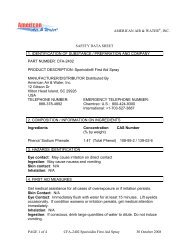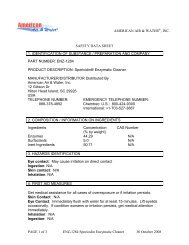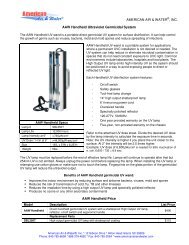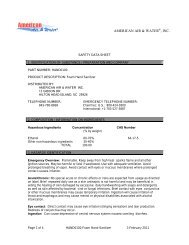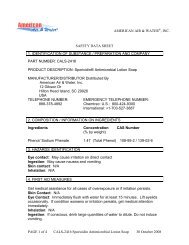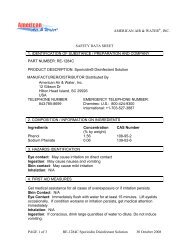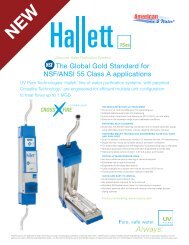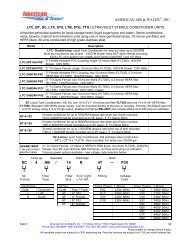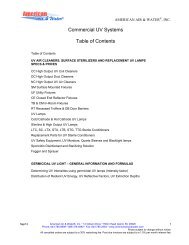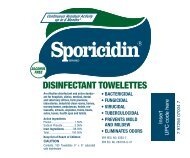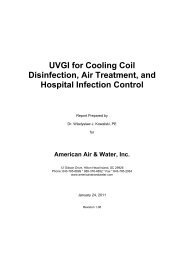Using Ultraviolet Radiation and Ventilation to Control Tuberculosis
Using Ultraviolet Radiation and Ventilation to Control Tuberculosis
Using Ultraviolet Radiation and Ventilation to Control Tuberculosis
You also want an ePaper? Increase the reach of your titles
YUMPU automatically turns print PDFs into web optimized ePapers that Google loves.
For what types of facilities should overhead UV radiation be considered as a means <strong>to</strong><br />
reduce the transmission of infection<br />
Overhead UV lamps are useful in crowded <strong>and</strong> poorly-ventilated buildings where the<br />
conventional control methods are inadequate. Examples of such areas are:<br />
Shelters for the homeless (3),<br />
Correctional institutions (4),<br />
Nursing homes,<br />
Hospitals: emergency rooms, operating rooms, intensive care areas, labora<strong>to</strong>ries,<br />
TB clinics: sputum collection rooms, aerosol treatment areas, ronchoscopy rooms,<br />
AIDS clinics, aerosol pentamidine treatment areas.(5)(17).<br />
In such places, there occasionally are unidentified TB cases. UV lamps also might be<br />
appropriate in pediatricians' offices where the disinfecting radiation would help<br />
control the transmission of other airborne infections such as measles.<br />
Is the airborne spread of TB in high risk settings best controlled by mechanical<br />
ventilation, air cleaners, or UV air disinfection<br />
The American Society of Heating, Refrigerating <strong>and</strong> Air-conditioning Engineers<br />
(ASHRAE) recommends an outdoor air supply of 15 <strong>to</strong> 20 cubic feet of air per minute for<br />
each person in a room (15-20 cfm/person) for comfort purposes (6). However, this amount<br />
of ventilation would not significantly reduce the number of airborne TB bacteria that a<br />
highly infectious person could produce. It would take more than 100 cfm/person of<br />
outdoor air <strong>to</strong> reduce the number of airborne bacteria <strong>to</strong> the same level that a UV lamp<br />
could (1,2,16). Supplying that much outdoor air would be impractical in many situations,<br />
because it is very expensive <strong>to</strong> heat or cool such large quantities of outdoor air <strong>and</strong> <strong>to</strong><br />
move it through a ventilation system.<br />
Indoor air that might contain infectious particles cannot safely be recirculated back<br />
in<strong>to</strong> a room unless the airborne microorganisms have been removed or inactivated.<br />
Filtering the air, installing UV lamps inside the air ducts, <strong>and</strong> other forms of air cleaning<br />
can effectively remove or kill bacteria <strong>and</strong> are suitable, or even necessary, in certain<br />
facilities. However, high-efficiency air cleaners are more expensive <strong>to</strong> install <strong>and</strong> maintain<br />
than overhead UV lamps, <strong>and</strong> generally are not practical for treating the air in large open<br />
rooms. See Section III of this booklet for more details on the use of general <strong>and</strong> local<br />
exhaust ventilation for the control of TB.<br />
7



